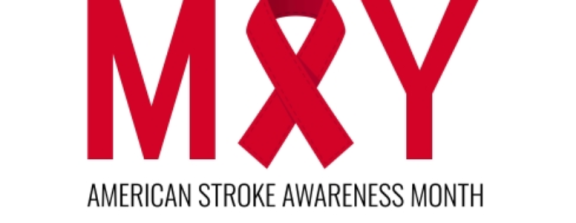American Stroke Awareness Month

May is American Stroke Month!
Strokes are complex. There are many types of strokes but the most common is what is called an Ischemic Stroke. This is a clot in the blood stream which cuts off the blood flow. This type of stroke occurs about 85% of the time so it is the most common. If you, or someone in your proximity, act promptly – in a 3-hour timeframe – then the survivor will probably get what is called the TPA treatment. Hopefully, that will mitigate the more serious issues, perhaps most or all issues. It just depends on the specific case!
The second broad type of stroke is a brain bleed, known as a Hemorrhagic Stroke, which accounts for about 15% of strokes. That type of stroke is not appropriate for tPA, still time is of the essence.
Take a moment to look at these signs and know when it could be happening to you.
F.A.S.T. Warning Signs
Recognize the warning signs of stroke and call 9-1-1 immediately. This can make the difference between a strong recovery and disability or even death.
F = Face Drooping – Does one side of the face droop or is it numb? Ask the person to smile. Is the person's smile uneven?
A = Arm Weakness – Is one arm weak or numb? Ask the person to raise both arms. Does one arm drift downward?
S = Speech Difficulty – Is speech slurred?
T = Time to call 911
It’s also never too late to start making healthier choices:
- Get enough sleep - Adults need 7-9 hours per night. Teenagers and children need more.
- Get regular check-ups - Schedule regular visits with your health care provider. Talk about how to control or manage your risk factors.
- Move more, sit less
- Aim for 150 minutes of moderate aerobic exercise or 75 minutes of vigorous exercise (or a combination) per week.
- Eat Healthy and Increase the amount of fruits and vegetables you eat.
- Reduce your intake of sodium, added sugar, and saturated and trans fats.
- Don’t smoke or vape If you currently smoke or vape, quit.

